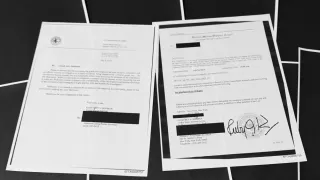July 16, 2016
That Big Pub Crawl Downtown? It's Just 'Pokemon Go' Fans
Brandon Bailey READ TIME: 3 MIN.
If you thought it was bad dodging phone-fixated "Pokemon Go" players on the sidewalk, just wait: Legions of tipsy people could soon be chasing cartoon monsters from one tavern to the next in a series of pub crawls planned for cities across the U.S.
The monsters are invisible unless you're playing the addictive smartphone game that's swept the U.S. and a few other nations so far. The same can't be said for the hundreds, and in some cases thousands, of pub crawlers who have RSVP'd on Facebook for these impromptu events.
Organizers in San Francisco, Brooklyn and other cities are encouraging people to dress in costumes and form teams to compete in capturing the virtual Pokemon critters. (Players use an app to scan for them in the real world.)
STARTING SMALL, GETTING BIGGER
While it isn't clear how many people will participate, the first big test should come this weekend. More than 900 people have signaled their intentions on Facebook to attend a "Pokemon Go" pub crawl in Cincinnati on Saturday, while 800 have said they'll turn out in Pittsburgh.
"We have a lot of customers who are into it. Our entire staff plays it," said Jeff Smith, a manager at the 16-Bit Bar and Arcade, the first stop on Saturday's "Pokemon Go" stroll through Cincinnati's Over-the-Rhine neighborhood.
Almost 6,000 people have RSVP'd on Facebook to participate in a Pokemon pub crawl in San Francisco on Wednesday night, organized by 21-year-old Sara Witsch, who says she's still devising the route. Police say they're unsure how many people to expect, but appear to be taking the prospect in stride.
"Obviously we expect them to obey traffic laws and not run out into the middle of the street," said Grace Gatpandan, public information officer for the San Francisco police department.
Another 3,500 people clicked a Facebook button to attend a similar event in Brooklyn on July 23, while 1,200 said they'd turn out the same night in St. Petersburg, Florida.
DRATINI, PLEASE, VERY DRY
In the week since the game's release, "Pokemon Go" fans have flocked to parks, piers and other public spots in search of creatures with names like Pikachu, Dratini and Jigglypuff. One small park in Sydney, Australia has drawn crowds of 1,000 or more players - sparking complaints from nearby residents about noise and trash, according to news reports
Witsch said she's been surprised by the response to her announcement in San Francisco, since she expected "maybe 50 people." She's still contacting bars to let them know about the event.
The response hasn't surprised Karen North, a psychologist and University of Southern California professor who studies social media.
"People are social animals, and they're always looking for something new and exciting to do," North said. "This is much more fun than just going to a pub crawl, because it gives everybody a common activity and something to talk about."
GETTING JIGGLYPUFF WITH IT
About 1,700 people have RSVP'd on Facebook for a July 23 Pokemon pub crawl in Sacramento. Despite reports that players have been injured and others robbed after becoming distracted by the game, City Councilman Steve Hansen said he's hoping for a positive vibe during the crawl, which two of his constituents are organizing.
"There's been this real anxiety around the country in the last couple of weeks. I think we need things that bring the community together," Hansen said, referring to recent racial and political tensions. He said the event offers the promise of "a little bit of harmless fun, especially if you make sure you don't walk into the street while chasing Pokemon."
New Yorker Justin Carlino voiced a simpler goal.
"Most kids who grew up with Pokemon are people our age now," said Carlino, 24, who decided to organize a Brooklyn event with his friend, Michael Ackermann, 26, after a recent night spent imbibing and playing the game. "They love Pokemon and they love drinking, so this is a perfect combination of both."






